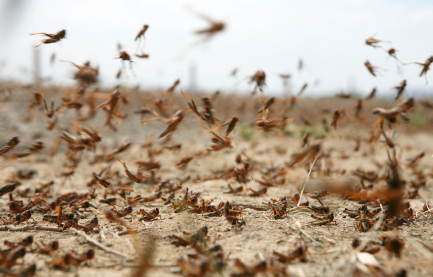
Plasma, bird swarms and the stock market
Research combining the efforts of the University of Warwick's Centre for Fusion, Space and Astrophysics, and the University of Warwick's Complexity Complex, has developed a powerful technique that could shed light on how ordered patterns form out of chaotic and complex circumstances. This work could have implications for our understanding of diverse systems, such as plasma patterns in the solar wind, fluctuations in financial market behaviour and the behaviour of crowds of people or flocks of birds.

Plasma in the solar wind is difficult to observe and model
Physicist Robert Wicks and his team were initially interested in understanding plasma behaviour in the solar wind — something that is difficult to study due to the limited number of satellites observing it. The solar wind is a stream of charged particles — a plasma — ejected from the upper atmosphere of the sun.
Wicks was interested in how such complex systems can suddenly move from a disordered state to an ordered one. These sudden changes are known as phase transitions and occur in a whole range of systems — think, for example, of a group of chaotically moving birds suddenly coming together to form a "v" shape, or locusts simultaneously alighting on a field of valuable crops. The behaviour of these kinds of systems is not well-understood since, in general, analysis involves tracking thousands of individual particles.
Due to the difficulty in obtaining real world data on complex systems, Wicks turned to existing mathematical models of the flocking behaviour of large groups of birds. He combined these models with an information technology tool called mutual information, which uses probability theory to measure the mutual dependence of a large number of variables. In contrast to traditional methods, the technique can find patterns and draw conclusions about a whole complex system from just a small sample containing as few as 10 points.
As Wicks explained in a University of Warwick podcast, the tool enables researchers to "analyse these swarms [of locusts], but only using a very limited amount of data, because you can't track millions of locusts... . Using the technique, we can use that limited amount of data to derive what the whole system of locusts will do."

This work could help understand the behaviour of locusts.
The mathematical models to which the researchers turned to replicate real world systems came from the work of Hungarian researcher Tamás Vicsek, Professor of Physics in the Department of Biological Physics of Eotvos University, Budapest. Vicsek had devised a simple model to replicate the flocking behaviour within colonies of bacteria and large groups of birds and insects. The phase transitions produced by the model provided an ideal test for the mutual information based tool.
The Warwick team applied their mutual information based technique to a small number of points within the Vicsek model. They compared their technique to the usual statistical techniques and found that the error rate of their tool was four times better than traditional methods of understanding phase changes in complex systems.
The technique's three major strengths are its ability to examine clumping of items within a system, determining when the system moves from order to disorder (or disorder to order), and uncovering correlations of points — that is, points that move together in some way.
While this tool will initially be used to further the group's understanding of the complex behaviours of plasmas, and then to study insect and bird behaviour, the group believes that it could also be used for stock market analysis. In this context, the technique may help uncover whether some stocks move in a correlated way within the complex financial system. Perhaps this could uncover hitherto unknown market connections between companies.
With regards to locust swarms, Wicks thinks that the research could be extremely important for farmers: "In the case of locusts, obviously where the locusts end up is very important, because they tend to eat everything in their path. So, if a very large swarm of locusts is heading towards your farmland, you'd want to know. And preferably we'd like to affect where they're going. If it's possible to tell when they're about to move, maybe we can influence what direction they move in, and if we can get them all to fly out to sea, then we've possibly diverted a famine."